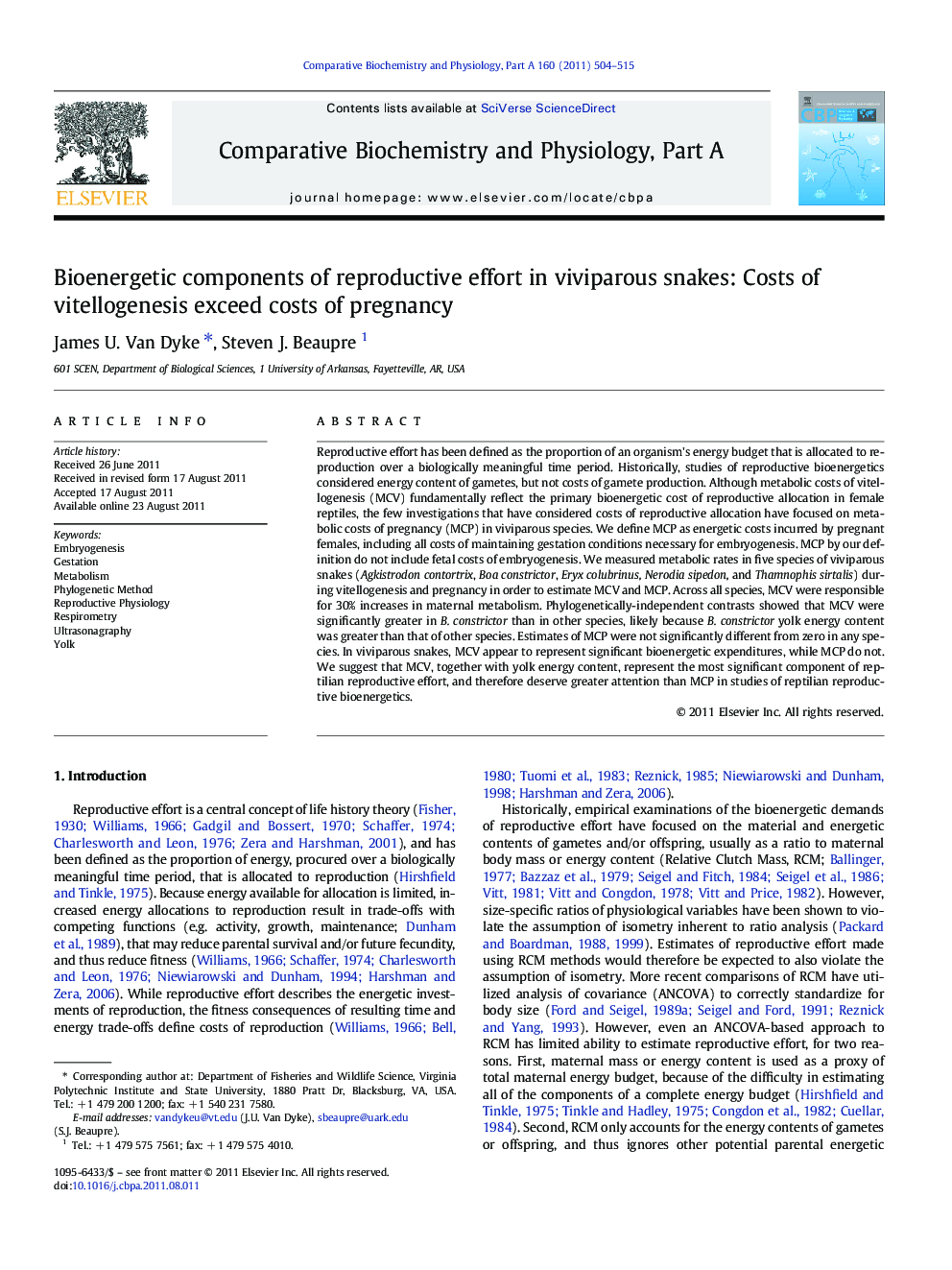| Article ID | Journal | Published Year | Pages | File Type |
|---|---|---|---|---|
| 8318745 | Comparative Biochemistry and Physiology Part A: Molecular & Integrative Physiology | 2011 | 12 Pages |
Abstract
Reproductive effort has been defined as the proportion of an organism's energy budget that is allocated to reproduction over a biologically meaningful time period. Historically, studies of reproductive bioenergetics considered energy content of gametes, but not costs of gamete production. Although metabolic costs of vitellogenesis (MCV) fundamentally reflect the primary bioenergetic cost of reproductive allocation in female reptiles, the few investigations that have considered costs of reproductive allocation have focused on metabolic costs of pregnancy (MCP) in viviparous species. We define MCP as energetic costs incurred by pregnant females, including all costs of maintaining gestation conditions necessary for embryogenesis. MCP by our definition do not include fetal costs of embryogenesis. We measured metabolic rates in five species of viviparous snakes (Agkistrodon contortrix, Boa constrictor, Eryx colubrinus, Nerodia sipedon, and Thamnophis sirtalis) during vitellogenesis and pregnancy in order to estimate MCV and MCP. Across all species, MCV were responsible for 30% increases in maternal metabolism. Phylogenetically-independent contrasts showed that MCV were significantly greater in B. constrictor than in other species, likely because B. constrictor yolk energy content was greater than that of other species. Estimates of MCP were not significantly different from zero in any species. In viviparous snakes, MCV appear to represent significant bioenergetic expenditures, while MCP do not. We suggest that MCV, together with yolk energy content, represent the most significant component of reptilian reproductive effort, and therefore deserve greater attention than MCP in studies of reptilian reproductive bioenergetics.
Related Topics
Life Sciences
Biochemistry, Genetics and Molecular Biology
Biochemistry
Authors
James U. Van Dyke, Steven J. Beaupre,
